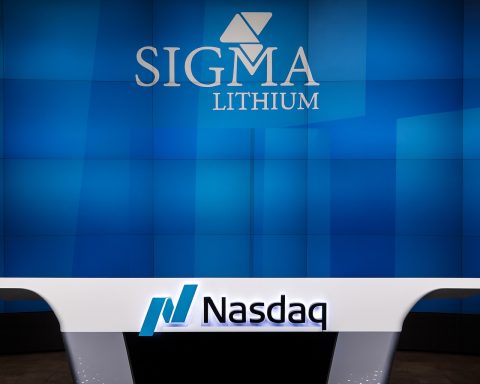Ethereum is stabilizing back above the key $3,000 mark today after a volatile two weeks that saw the second‑largest cryptocurrency fall almost 20% from its early‑November highs.
As of publication on November 19, 2025, Ethereum (ETH) is trading around $3,090–$3,100, up roughly 1–2% in the last 24 hours, with a market capitalization near $370–375 billion and daily trading volume in the low‑to‑mid $30 billion range, according to live data from CoinMarketCap and other market dashboards. [1]
Over the past day, ETH has swung between roughly $3,000 and $3,150, having briefly dipped below $3,000 earlier this week before recovering. [2] On a seven‑day view, however, Ethereum remains down by about 11%, underperforming an already weak broader crypto market. [3]
Below is a detailed look at what’s moving the Ethereum price today and what traders and long‑term holders are watching.
1. Ethereum Price Snapshot – 19 November 2025
- Spot price: ~$3,095 per ETH
- 24h performance: up around 1–2%
- 24h high / low: roughly $3,150 / $3,000, depending on the venue and time window [4]
- Market cap: about $373B, keeping ETH firmly at #2 by capitalization [5]
- 24h trading volume: around $33–35B on major tracked exchanges [6]
- 7‑day change: roughly ‑11%, versus about ‑9% for the overall crypto market [7]
A mid‑day update from ABP Live earlier showed ETH at $3,029.60, down more than 5% over 24 hours, as the global crypto market cap slid to about $3.12 trillion and the market Fear & Greed Index fell to 16 (“Extreme Fear”). [8] Since then, the market has staged a modest rebound, with live trackers from Cryptonews and CryptoRank reporting Ethereum back above $3,100, up 2–3% on the day at times. [9]
2. Why Ethereum Is Moving Today: Five Key Drivers
2.1 ETF outflows: pressure from Wall Street products
The most immediate headwind for ETH is coming from spot Ethereum ETFs:
- FinanceFeeds reports that crypto ETFs saw $437 million in net outflows yesterday, with Ethereum ETFs accounting for about $182.8 million of that total — the fifth straight day of net redemptions for ETH products. [10]
- Farside Investors’ ETF flow table shows a string of negative Ethereum ETF prints through mid‑November, including a combined ‑$182.7M on November 17 and a further ‑$74.2M on November 18 across U.S. spot ETH funds. [11]
- Data compiled by SoSoValue indicates that BlackRock’s ETHA alone recorded a single‑day net outflow of around $165M, with most other ETH ETFs also in the red. [12]
- A separate report from Stocktwits cites SoSoValue data showing $74.22M of net outflows from spot Ethereum ETFs on Tuesday, alongside $377.2M in Bitcoin ETF redemptions. [13]
Methodologies differ slightly between trackers, but they all agree on the direction: institutional capital has been net exiting spot ETH ETFs for at least five sessions in a row.
For now, the outflows are not triggering a fresh collapse in price, but they help explain why ETH has struggled to reclaim the $3,300–$3,500 range even as intraday bounces appear.
2.2 Macro jitters: Fed caution and risk‑off sentiment
The broader macro backdrop remains fragile:
- Stocktwits notes that recent declines in crypto followed mounting worries that the U.S. Federal Reserve might delay further rate cuts at its December 9–10 meeting, after senior officials signaled a desire to “proceed slowly” amid sticky inflation. [14]
- Bitcoin has been oscillating around $90,000–$92,000 today, with several outlets describing the environment as one of “extreme fear” in risk assets. [15]
Tighter liquidity and skepticism about near‑term easing tend to hit high‑beta assets like crypto first, and Ethereum is no exception. That macro drag is part of why ETH is still down double‑digits on the week despite today’s bounce.
2.3 Whale and institutional flows: BlackRock and new buyers
Not all large‑scale flows are bearish:
- An AI‑summarized report from AInvest highlights that a newly created address purchased 2,500 ETH at an average of about $3,035.56, a roughly $7.6M buy at current prices, prompting speculation about fresh accumulation. [16]
- At the same time, BlackRock deposited 64,707 ETH into Coinbase Prime on November 18, while reportedly having sold more than $198M worth of ETH in recent weeks — a pattern that has fueled fears of continued institutional selling. [17]
Despite these large moves, ETH has so far held above key support in the $2,904–$2,916 and $2,760–$2,772 zones highlighted by on‑chain and liquidity studies, suggesting that demand is still meeting supply in these areas. [18]
2.4 Regulatory developments: early signs of more formal adoption
Two regulatory developments are hovering in the background:
- The U.S. Office of the Comptroller of the Currency (OCC) recently clarified that national banks can hold ETH on their balance sheets to pay blockchain gas fees, provided the assets are segregated in dedicated accounts. Analysts see this as a small but meaningful step toward deeper institutional integration of Ethereum’s infrastructure. [19]
- On the legislative front, Stocktwits reports that U.S. Senate Banking Committee Chair Tim Scott hopes to advance a “CLARITY” crypto market‑structure bill in December, with the goal of sending it to the President’s desk in early 2026. While the bill’s final form is still uncertain, market observers note that regulatory clarity — whether perceived as friendly or not — tends to reduce the long‑term risk premium baked into crypto prices. [20]
For today’s price action, these factors are more background narrative than direct catalyst, but they help frame how institutional players may view Ethereum’s medium‑term risk profile.
2.5 Sector rotation: memes, L2s and altcoins show pockets of strength
While the majors have been under pressure, pockets of the altcoin market are flashing green:
- A live market update from Cryptonews notes that meme coins jumped about 4.3% today, with tokens like PUMP and SPX6900 posting double‑digit gains. At the same time, CeFi, AI tokens and Layer 2 projects all rallied, with Starknet up more than 25% on the day. [21]
- In that report, Ethereum itself is described as “rising 2.36% to break above $3,100”, participating in the bounce but lagging some of the smaller, more speculative names. [22]
This rotation fits a familiar pattern: after a sharp market‑wide sell‑off, traders often first buy large caps like BTC and ETH, then quickly branch out into higher‑beta altcoins once they perceive a local bottom.
3. Technical Picture: Downtrend Intact, But Bottom‑Fishing Has Started
3.1 Still below key moving averages
Indonesian exchange Pintu’s daily analysis describes Ethereum as firmly in a short‑term downtrend:
- ETH briefly traded near $2,995 in recent sessions, testing a demand zone between $2,880 and $2,950.
- As of today, the coin is hovering around $3,080–$3,100, up about 1.9% over 24 hours on their local market. [23]
- On the daily chart, ETH remains below the 20, 50, 100 and 200‑day EMAs, all of which are sloping downward, a structure that typically signals that sellers still have the upper hand in the medium term. [24]
Pintu’s analysts flag $3,083 as an important intraday level: a daily close above it would be the first sign that selling pressure is beginning to fade, while a close below $2,950 could open the door to $2,800 and even $2,600.
3.2 Ascending triangle vs. falling wedge: mixed but slightly constructive
Different technical frameworks are telling subtly different stories:
- A detailed report from Brave New Coin argues that Ethereum is forming an ascending triangle with resistance near $3,650, while traders watch support in the $3,000–$3,100 band. The article notes that ascending triangles historically break higher more often than not, especially if volume rises on attempts to clear resistance. [25]
- CoinCentral focuses on a falling wedge pattern after ETH dropped nearly 20% in November, from around $3,900 to retest the $3,000 level for the first time since mid‑July. Falling wedges often precede bullish reversals, particularly when they coincide with extreme sentiment. [26]
Despite differences in pattern naming, both analyses converge on a similar idea: ETH is in a corrective downtrend but may be approaching a zone where buyers historically step back in.
3.3 “Buy zone” metrics: Mayer Multiple and long‑term holders
CoinCentral highlights that the Mayer Multiple — the ratio of price to the 200‑day moving average — has fallen below 1 for the first time since mid‑June. Historically, Ethereum trading below its 200‑day MA has often coincided with longer‑term bottoming zones, though there are notable exceptions, including the 2022 bear market. [27]
Brave New Coin adds a more structural lens, noting that:
- ETH is still trading above its 200‑week moving average, a level that has repeatedly served as long‑term support in past cycles. [28]
- Wallets classified as long‑term holders have increased their balances from about 10 million to over 27 million ETH in 2025, suggesting that larger, patient investors are accumulating rather than exiting. [29]
Taken together, these indicators suggest that while the short‑term trend is down, the longer‑term structure has not broken, which helps explain why a 20% drop has so far attracted more buyers rather than triggering outright capitulation.
4. Sentiment and On‑Chain Activity: Retail Capitulation, Institutional Patience
4.1 Retail wallets are selling into weakness
Fresh on‑chain data summarized by Santiment and relayed via TradingView shows that the latest wave of selling in Bitcoin, Ethereum and XRP is being led by small wallets, not whales:
- ETH addresses holding less than 0.1 ETH slashed their balances by nearly 0.9% in the last month, while similarly small BTC and XRP wallets also reduced their exposure. [30]
Analysts describe this as a “fatigue event”: after weeks of grinding losses, smaller holders finally send coins to exchanges and sell. Historically, these bouts of retail capitulation often occur late in a down‑move, sometimes preceding stabilization or recovery — provided that larger players do not join the exodus in force. [31]
4.2 Fear & Greed at 16, but ETH/BTC ratio turns constructive
- ABP Live notes that the broader Market Fear & Greed Index is at 16/100, deep in “extreme fear” territory, as most large‑cap coins spent much of the last day in the red. [32]
- Yet a new Ethereum‑focused piece from U.Today points out that Ethereum’s RSI on the ETH/BTC pair has broken upward, and the MACD has flipped bullish, hinting that ETH might outperform Bitcoin in the coming weeks. [33]
- That same report notes that ETH briefly slid to about $2,992 within the last 24 hours but quickly rebounded to a high near $3,168, and is now consolidating around $3,094, up roughly 1.1% on the session. [34]
If ETH does begin to outperform BTC on a sustained basis, history suggests that could usher in a more emphatic altcoin phase, as many traders treat Ethereum’s relative strength as a proxy for broader risk appetite in the non‑Bitcoin segment of the market.
4.3 Gas fees and network usage
Live dashboards from CryptoRank and Cryptonews show unusually low base gas readings for Ethereum today (around 0.2–0.3 gwei on their trackers), alongside ETH dominance near 11% of the total crypto market cap. [35]
Low gas can signal either muted on‑chain activity or more efficient usage via Layer‑2s — or simply a momentary lull in transactions. Either way, it means that transaction costs for users are currently modest, which historically has tended to support usage when price volatility calms down.
5. Upcoming Catalysts for Ethereum
5.1 The “Fusaka” upgrade and PeerDAS
U.Today’s coverage highlights an upcoming “Fusaka” Ethereum upgrade in early December, which is expected to introduce PeerDAS, a data‑availability enhancement designed to:
- Increase data capacity for Layer‑2 rollups
- Further reduce transaction costs
- Improve scalability for dApps and on‑chain activity overall [36]
Lower fees and higher throughput are generally seen as price‑supportive over the long run, especially for an ecosystem that already dominates DeFi and real‑world asset tokenization. CoinCentral estimates that Ethereum currently holds around 63% market share in the RWA tokenization sector, with over $11 billion in tokenized assets hosted on its network. [37]
5.2 ETF flows: does the bleeding stop?
The near‑term story, however, likely hinges on ETF flows:
- If redemptions from spot ETH ETFs stabilize or flip back to inflows, that could remove a key source of sell‑pressure and help ETH reclaim the $3,300–$3,500 band. [38]
- Continued heavy outflows, by contrast, would keep a lid on rallies and may encourage traders to keep fading bounces toward resistance.
Given how central ETFs have become to the Bitcoin price discovery process, many analysts expect Ethereum to increasingly follow the same pattern as the ETH ETF complex matures.
6. What Traders and Investors Are Watching Next
6.1 Short‑term price levels
Across today’s commentary, a few price zones keep coming up:
- $3,083–$3,100: reclaiming and holding this band on a daily closing basis is seen as the first sign that sellers are losing control. [39]
- $2,904–$2,916 and $2,760–$2,772: liquidity and support zones identified by Hyblock Capital and other data providers as areas where a final “washout” might occur if the market takes another leg down. [40]
- $3,500–$3,650: a key resistance region where multiple analyses place the upper boundary of current patterns (ascending triangle or wedge), and where a confirmed breakout would signal a more decisive shift back to bullish momentum. [41]
6.2 Analyst views: cautious optimism, high uncertainty
CoinCentral notes that high‑profile analyst Tom Lee believes Ethereum is likely to bottom this week after its 20% November drawdown, citing:
- The Mayer Multiple “buy zone”
- Reset liquidity clusters below price
- Ethereum’s still‑dominant position in DeFi and tokenization [42]
He has floated very ambitious long‑term targets in the $12,000–$62,000 range under certain adoption scenarios, though those numbers are speculative and highly contingent on macro conditions and network growth; they should not be treated as base‑case forecasts. [43]
Other analysts, such as those featured by Brave New Coin and U.Today, are more restrained but share a similar theme: short‑term volatility remains high, yet structural indicators (long‑term holder accumulation, bullish divergences, and major support zones) lean cautiously positive. [44]
7. Bottom Line: Ethereum Today Is a Tug‑of‑War Between Fear and Structure
On November 19, 2025, Ethereum sits in a tense middle ground:
- Bearish forces: weeks of ETF outflows, macro uncertainty around interest rates, and a sharp November drawdown that left retail traders deeply fearful and actively selling. [45]
- Bullish forces: evidence of long‑term accumulation, “buy zone” valuations versus long‑term averages, early signs that ETH/BTC may be turning in Ethereum’s favor, and an upcoming upgrade aimed at making the network cheaper and more scalable. [46]
For now, the market appears to be testing the $3,000–$3,100 region as a potential base. Whether this area ultimately marks a durable bottom or just a pause before deeper losses will likely depend on:
- The trajectory of ETF flows over the next several sessions
- Incoming macro data and Fed communications
- How traders respond to technical levels and upcoming Ethereum protocol upgrades
As always, this article is for informational purposes only and does not constitute financial or investment advice. Crypto assets are highly volatile, and anyone considering exposure to Ethereum should carefully assess their own risk tolerance, time horizon, and need for independent professional guidance.
References
1. coinmarketcap.com, 2. finance.yahoo.com, 3. www.coingecko.com, 4. finance.yahoo.com, 5. coinmarketcap.com, 6. coinmarketcap.com, 7. www.coingecko.com, 8. news.abplive.com, 9. cryptorank.io, 10. financefeeds.com, 11. farside.co.uk, 12. m.sosovalue.com, 13. stocktwits.com, 14. stocktwits.com, 15. news.abplive.com, 16. www.ainvest.com, 17. www.ainvest.com, 18. www.ainvest.com, 19. www.ainvest.com, 20. stocktwits.com, 21. cryptorank.io, 22. cryptonews.com, 23. pintu.co.id, 24. pintu.co.id, 25. bravenewcoin.com, 26. coincentral.com, 27. coincentral.com, 28. bravenewcoin.com, 29. bravenewcoin.com, 30. www.tradingview.com, 31. www.tradingview.com, 32. news.abplive.com, 33. u.today, 34. u.today, 35. cryptorank.io, 36. u.today, 37. coincentral.com, 38. financefeeds.com, 39. pintu.co.id, 40. coincentral.com, 41. bravenewcoin.com, 42. coincentral.com, 43. coincentral.com, 44. bravenewcoin.com, 45. financefeeds.com, 46. bravenewcoin.com










